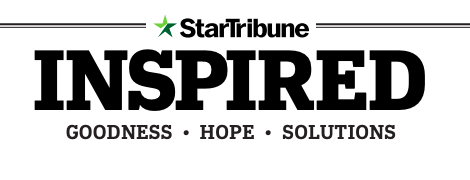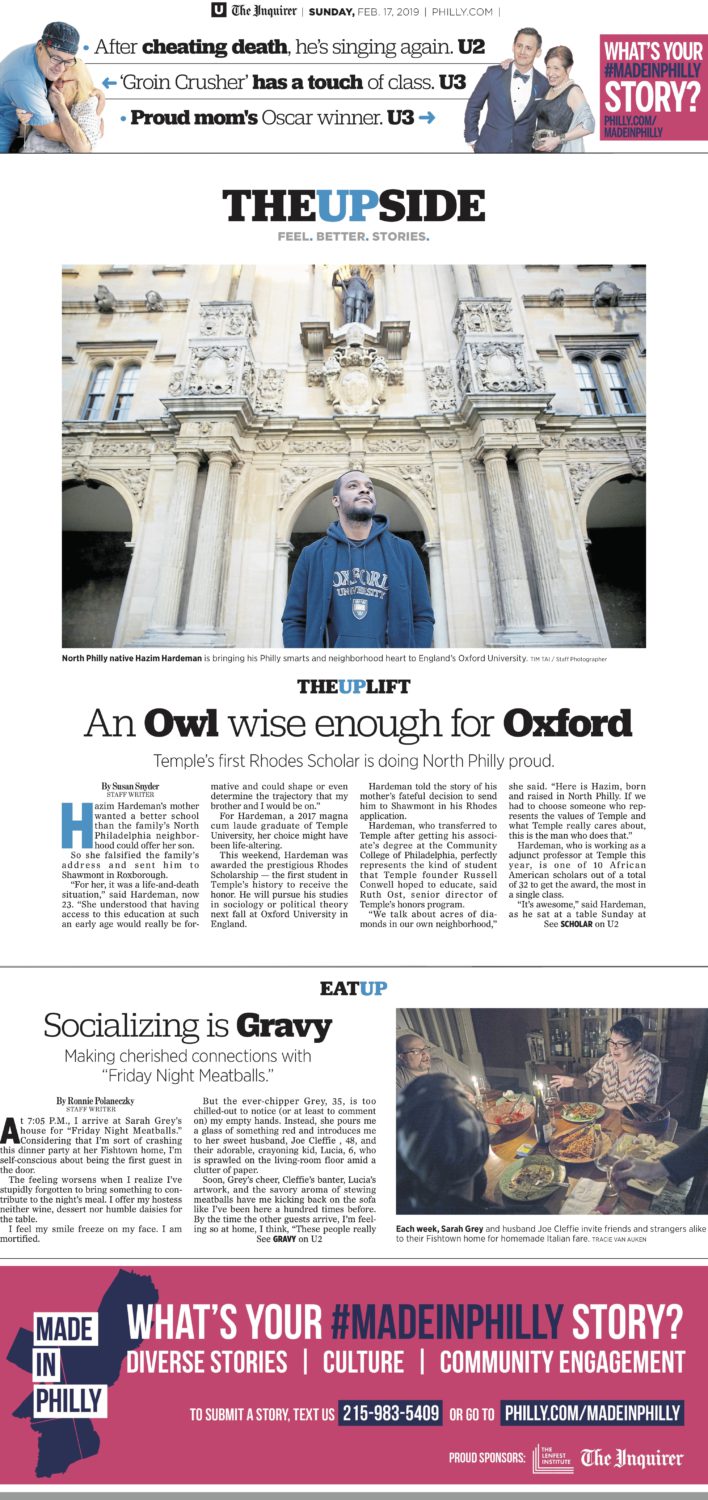The Philadelphia Inquirer got an idea from the (Minneapolis) Star Tribune – focus on the good stuff, too. In April, the Inquirer will launch a new Sunday print section (yes, you read that correctly) that focuses on the solutions, stories and people making the region better.
It’s called The UpSide, and it was Inspired by Strib’s Inspired, which launched last year. The Strib’s standalone print section comes out on Saturdays and had two sponsors in its first year. Digital stories from the section bring in a total of between 100,000 and 200,000 pageviews a month. And the beat tends to “be strongest with engaging local readers, retaining local subscribers and engaging online readers,” said Suki Dardarian, the Star Tribune’s managing editor and vice president, in an email.
Neither project, however, is an attempt to manufacture good news and ignore reality.
“We’ve been under siege for so long that we’ve had to focus on the stuff that we really can’t trust will go well without us,” said Ronnie Polaneczky, a columnist at the Inquirer who will lead the new section in Philly. “But I think what we’re learning is, jeez, that other stuff is just as important.”

Screen shot, Star Tribune
Minneapolis
Last summer, Star Tribune columnist Gail Rosenblum started a new job leading the good news section. It’s something readers were begging for, she said.
“We are just inundated with troubling and divisive news day in and day out,” she said. “I think it was just a way to offer a little antidote to the realities of the day.”
The local and national stories she highlights in both print and online are ones that often go uncovered in newsrooms, but they’re about things that are happening every day, too.
“The response has been unlike anything I’ve ever experienced in my almost 40-year career,” Rosenblum said. “…There’s just this hunger, and we’re feeding it.”
In addition to being drivers for engagement and sponsors, Inspired stories have a longer tail, Dardarian said, because Facebook is often the biggest referrer.
Inspired is currently a four-page standalone section that runs Saturdays. The Strib started a weekly newsletter featuring the work online. They’re working on finding new sponsors and attracting more readers online. And this year, the newsroom is launching an Inspired speakers series of events.
The work takes on tough topics, including justice, health, education and poverty, but with a solutions journalism approach.

A mockup of the Inquirer’s The UpSide.
Philadelphia
Philly took Minneapolis’ success with its good news section and decided to try its own, but this isn’t the first time Philly and Minneapolis have worked together. Top editors got to know one another through the Knight-Lenfest Newsroom Initiative, also known as Table Stakes. (Disclosure: My coverage of local news is funded in part by Knight, and Lenfest is a Poynter funder.)
In 2018, the two newsrooms worked together to cover the Super Bowl.
“One of the great aspects of Table Stakes is the lasting spirit of peer-to-peer collaboration,” the Inquirer’s executive editor Stan Wischnowski said in an email. “Minneapolis and Philly continue to share information about every aspect of the business.”
Related: A spotlight on students helped one small North Carolina paper shine
In Philly, the cost of the Sunday newspaper is going up, and adding The UpSide is one attempt to add some value for subscribers, Polaneczky said.
The Inquirer is also launching a monthly event series for subscribers, Inquiring Minds, and the UpSide will be part of that series.
Neither The UpSide or Inspired are among the first to try to capture good news for readers. The Washington Post has The Optimist newsletter. The Today Show has Good News, as do MSN and Huffington Post.
Like in Minneapolis, the stories will come from across the newsroom, and in a lot of cases, they’re already out there, they just need a place to live.
“I’m nearing completion of entering 2018 Inquirer stories in journalism contests, and what I realized when we started talking about the UpSide is how many good-news, uplifting stories we already do,” said Michelle Bjork, deputy managing editor of operations and projects, in an email. “The challenge for readers, though, is that those stories are intermingled with all the negative. It’s almost like readers can’t see the forest for the trees. By devoting an entire print section and digital vertical to only ‘good news,’ it will spotlight those stories, making it easier for readers.”







